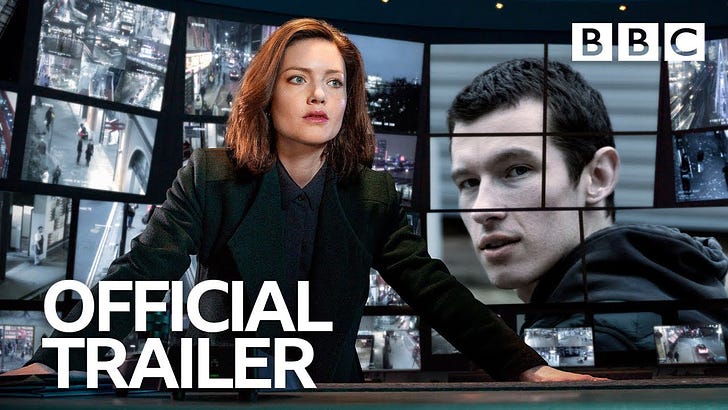Don’t worry. There are no spoilers in this article that you won’t find in series trailers. The Capture is set in London, and the series revolves around a mistaken identity that is intentionally caused by deepfake technology. BBC launched the first season in 2019, and the second season was released this year with a similar premise and new storyline.
It plays into deep-seated human fears about being falsely accused and framed for a transgression you didn’t commit. In the past, that might lead to ostracism based on hearsay for breaking a societal norm or jail time if the transgression was a crime. The fact is, your reputation and personal freedom have always been susceptible to a coordinated effort to undermine them. In The Capture, deepfake technology is a key tool used to mislead, misdirect, and misappropriate justice.
Deepfake in the Real World
A really interesting aspect of the series is that it takes deepfake into the real world. Deepfake technology exists in digital spaces, so most vectors of misuse are expected to start and end there. However, the intersection of the physical and digital world is closed circuit television (CCTV). This provides the vector of misdirection for the conflict behind The Capture. This is also why London is the perfect setting for the series.
As of 2022, Clarion Security estimates there are nearly 1 million CCTV cameras in London alone. That is about one camera for every ten city dwellers. The company estimates a London resident is likely to be captured on video 70 times per day.
From one perspective, Londoners may conclude after watching The Capture that deepfake technology presents a risk beyond digital spaces. Then again, this wouldn’t be an issue if there weren’t cameras recording everything, everywhere, all of the time. All technologies have positive and negative direct and indirect effects. The proliferation of CCTV in London may make deepfake fraud in the real world possible, even if the portrayal of technology is not entirely in keeping with its capabilities.
What’s worse: CCTV or Deepfake?
The New York Times reported in 2021 that London Police Are Taking Surveillance to a Whole New Level. Is this a public safety technology or an invasion of privacy? The Times’ reports:
London’s police department said on Friday that it would begin using facial recognition to spot criminal suspects with video cameras as they walk the streets, adopting a level of surveillance that is rare outside China…Police departments contend that the software gives them a way to catch criminals who may otherwise avoid detection. Critics say the technology is an invasion of privacy, has spotty accuracy and is being introduced without adequate public discussion.
This is not to say deepfake technology would not present a potential for misuse without CCTV or even a critique of London’s camera network. It is an example of how an established technology poses potential risks directly and may be a catalyst for unintended consequences. However, because it’s an established technology, we often take for granted that “it must be safe.” This is the status that technologies such as deepfake need to achieve to overcome negative hyperbole.
Interestingly, the first season of The Capture also has a plot element that rests on another video capture technology, GoPros. The issue of audio and video feed synchronization becomes an important point in another criminal trial. So, we have two issues where the video you are viewing doesn’t tell a true story.
Is the Technology Portrayal Accurate?
Filmmakers often take liberties when portraying new technology, and The Capture offers an overly optimistic view of what deepfakes can do. You need a lot of video data from multiple angles to truly pull off what we are expected to believe, but it is not inconceivable that this level of passable manipulation will be possible in a few years.
Also, there is a question about what is possible in real-time versus recorded video. For the latter, as long as you have a lot of data, a lot is possible. When it comes to the former, this is unlikely to be passable with today’s technology and techniques.
How Should We Interpret the Series’ Impact
It is worth noting that I don’t have any issue with the film, plotline, or inaccuracies in portraying the technology. Filmmakers tell fictional stories. Not everything needs to be true or fully accurate. We want them to tell compelling stories, even if some of the details are not realistic today.
However, it is also worth noting that cultural portrayals will influence how the public thinks about deepfake and other synthetic media technologies. The positive portrayals, such as on America’s Got Talent, can easily be offset by negative portrayals. Fear is a more potent driver of human perception than delight.





What’s in a Name?
This is precisely why the industry needs to not only shine a spotlight on positive use cases but also embrace the term “deepfake.” There are some companies in the industry that believe the negative connotation associated with deepfake based on hundreds of stories about its potential misuse has so polluted public perception that a new term is required. That is probably a mistake. If there are no positive stories using the term “deepfake,” then sentiment will be overwhelmingly negative, and that can lead to undesirable outcomes such as regulatory constraints on the technology’s use.
By contrast, if companies like Apple, Disney, and movie studios are using deepfake technology every day and consumers are regularly exposed to it, the techno panic will recede. You can still call the technology hyper-realism or some other euphemism, but it is a Sisyphean task to create vernacular distance from a colloquial term that people already know.
My recommendation? Embrace the term, show some positive examples, and ride the wave. Also, check out The Capture. BBC has created another gem.





